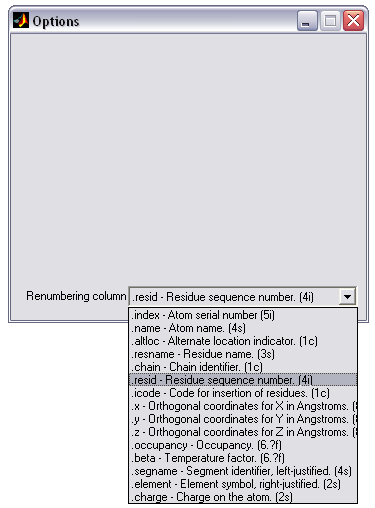

Find it HERE, or get it from the FILES PAGE. To prepare, we will need the topology file (top_all27_prot_lipid.rtf).

create a PSF using the topology library.list the primary sequence of the residues.strip out the protein from the water from the.Tkcon method (Make sure you are using a tkcon!!) The two ways we will do it is through the tkcon, and a menu plugin, AutoPSF. So, we both generate a PSF and “clean” the PDB for simulation use. Then, we will re-associate the coordinates to this PSF file, making a new PDB, paired exactly with the PSF. We will piece together the protein using the topology libraries from this sequence, like adding beads to a chain. What we need to do, essentially, is use the PDB file to specify the primary sequence of the protein. The atom number, segment number (more on this later), residue name, atom name, atom type number, charge, and mass are specified here. * DATE: 5/ 4/ 6 15:46:13 CREATED BY USER: mccallum Here is part of a PSF file for a small peptide: This includes connectivity, classical charge, and other things. The PSF (or Protein Structure File) contains bonding and other information that a molecular simulation needs in order to define certain parameters. If you looked at any PDB files from the RCSB, you know there is also a large amount of information, in the form of comments in the PDB header. It is color-coded to help you understand what information is there (of course the actual PDB will just be a plain text file, black and white). For example, coordinates are discussed on page 186.) In addition, here is a graphic (kindly provided by Tamas Gunda ) which spells out the PDB specification. The PDB (and other) specifications can be found a the RCSB here (this document is 200+ pages long! Use of the index is critical. There is also the additional complication that PDB files obtained from RCSB often do not contain coordinates for hydrogens (x-rays can’t see these little guys!!), and of course, hydrogens must be included in any simulation of a protein. This is fine for displaying information, but when we move to simulations, where bonded and non-bonded (VdW-type) interactions are much different, bond definitions must be made. How then does VMD draw in bonds? The answer is that standard molecular viewers which read PDB files make some sort of default bond definition: 1.5 angstroms or less means the atoms are bonded (or some other length). In fact VMD only reads lines beginning with “ ATOM ” or “ HETATM ”.

There are extensions to the PDB standard which allow this information to be given, but it is not widely used. It does not specify which atoms are connected to which. It turns out that standard PDBs only contain coordinates of atoms. We will also learn about associated library files (called topology and parameter files) which allow us to generate the necessary files. We will also learn how and why PDB files are broken up into different segments. Structure files are necessary in order to run molecular simulations.
#Vmd psfgen how to#
University of Illinois, 405 N.In this section, we will learn how to create a structure file from a simple PDB file. NIH Center for Macromolecular Modeling and Bioinformaticsīeckman Institute for Advanced Science and Technology >               Kindly, help me in these regard. > sin_channel_charges_modified.pdb -z 1000 +z 1000 -s W -o sin_sol_spce > solvate sin_channel_charges_modified.psf > I am using following comment for solvating purpose: > psfgen) clearing structure, preserving topology and aliases > psfgen) Info: writing pdb file sin_sol_spce.pdb > dimensions, I am getting following errors in the vmd. >               When I solvating my system for large > the big box you've made, the pdb can't be written, since it exceeds the > fit atoms whose values fall outside the range (-999.999, 9999.999). > PDB files are formatted in a rather unfortunate way. > restricts then, is there any other way to do. > Yes, I tried to create a water box of size ranges from (2000,2000,2000 to Huge systems will millions or billions of atoms, for example: If you use solvate via the scripting interface, you can make itĮmit other file formats besides PDB. In reply to: Mani Kandan: "Re: Solvate Plugin Error - Reg".Previous message: Mani Kandan: "Re: Solvate Plugin Error - Reg".Next message: Brian Radak: "Re: QwikMD and GROMOS Re:".


 0 kommentar(er)
0 kommentar(er)
